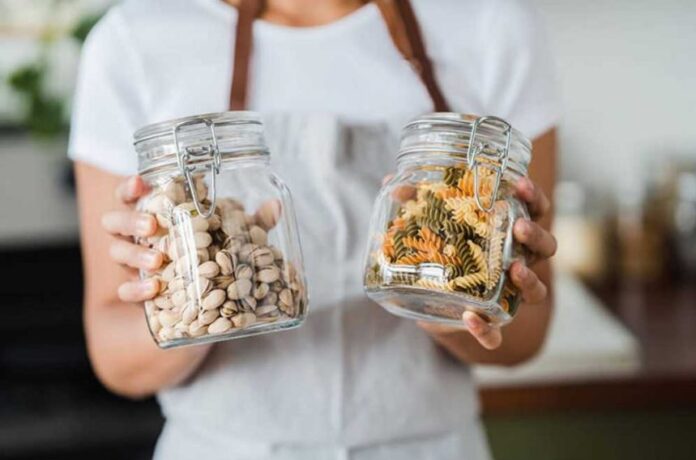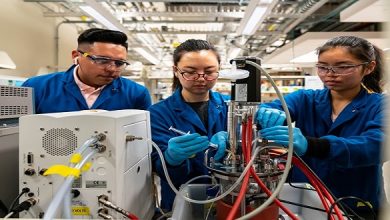
A supermarket stocks many forms of food packaging. Some foods can be canned while others are packed in plastic bottles or glass jars. Also, foil is used to cover food. Every food packaging material has its advantages and disadvantages. It is well-known that jars and bottles offer convenience.
Packaged items can pose hidden risks, just like other convenience foods. It is important to have the right information and knowledge to be able to identify which products are beneficial and which are harmful to your health.
What’s the purpose of bottles and jars?
Bottles and jars have been in use for many years. Glass containers are from Ancient Egypt.
For many years, the bottle-making process was not perfected. There were many improvements made after 1900. Around this time, the first bottle-making machine was developed. This led to a significant increase in the production of bottled and canned food products.
Packaging is primarily used to protect food products. Packaging has evolved over time to serve other purposes, which benefit both consumers and producers.
Modern glass and plastic bottles are used to store bottled goods. Packaged goods are sold in cans, glass jars and cartons. You can also market fish, vegetables, meat, shrimp, and other seafood. You can also find non-food items like toothpaste, shampoo, pet food, and garden tools, among others.
There are many food-packing bottles and jars available.
There are many packaging options for canned and bottled food. To give you a better understanding, we’ll quickly go through each one.
1. Water bottles made of plastic
This packaging is the most popular. The majority of waste is made up of plastic bottles and jars. It might take these containers millennia for them to break down.
Plastic bottles can be recycled inefficiently. Plastic bottles often lose their quality after recycling. Plastic bottles that have been thrown away in landfills can release harmful chemicals into the soil or water supply.
To be more precise, plastic bottles that are thrown away cause significant environmental damage. These petroleum-based materials are used all over the globe to make beverage packaging. They are not biodegradable so they cannot be recycled.
2. Padded cardboard boxes
Jarred and bottled packaged goods are less expensive and better for the environment. It is also a good substitute for common materials like aluminum, plastic, and tinplate. A major advantage for businesses is the low manufacturing cost of cardboard packaging. It’s also easy to transport and store.
Cardboard packaging is lightweight and inexpensive, but it’s also versatile. Many companies use it as a marketing tool.
Keep material sustainability, cost-effectiveness and limitations in mind when packaging with cardboard.
3. Disposable glass containers
Glass containers are a great choice because they can be recycled and biodegradable. They are available in many sizes and thicknesses, and they come with a square design.
Glass jars with tight-fitting lids offer many benefits. It prevents germ development, among other things. It can also be stored in the microwave or freezer and does not release potentially harmful substances.
To store food in a safe manner, a glass jar or canister could be used. This prevents food from getting spoiled or rotten. They are used often to contain liquids because they are sealed.
Tempered glass is used to make bulk glass containers. It is strong, but easy to clean, and maintain.
4. Made from wood
Hardwood packing is an environmentally friendly alternative. Hardwood packaging is used by many companies as it enhances the product’s quality and also helps the environment. Hardwood packaging is on the rise.
Wooden packaging is made from real tree parts and not plastics or other synthetic materials. This type of packaging is often very attractive for its aesthetic and tactile qualities.
Wooden crates are a great way to ship items. Wooden crates have attractive visual qualities and a pleasant feel that make them easy to use. Wooden packaging offers many benefits over other packaging options, including the ability to be recycled, biodegradable and renewable. It is also less expensive than other packaging options.
It has some disadvantages, despite its many benefits. It is less durable than plastic or metal at first. Second, customization options are limited.
5. Metal storage containers
Metal containers are essential for food businesses to store diverse items. Tin-plated steel is a popular choice because it is both corrosion-resistant and economically viable. They are also resistant to acidic foods.
Preserving food in metal containers can be done by warming or chilling it before placing it in the containers.
Metal storage containers are durable and reliable. These containers are made from high-quality steel.
6. Containers made of aluminum
Metal bottles and jars are strong and durable. This material is stronger and lighter than plastic and glass.
Aluminum containers are recyclable and can be reused easily. They are also less expensive than normal glass packaging.
Aluminum cans and other containers of this type are lightweight and easy to transport. Aluminum cans are also more eco-friendly than steel and glass.
Aluminum storage containers are extremely durable. Because of their durability, you can use them with confidence. These advantages are why aluminum packaging has seen a rise in popularity in many industries over the past few years.
Metal containers are great for holding liquids and snacks. It is preferred over other materials because it doesn’t react with liquids or food. This packaging is common for cheese, milk, coffee, and tea. You can find it in many sizes and forms.
The Benefits of Buying Bottled and Jarred Packaged Goods
Not only are packaged meals more convenient but also less likely to be contaminated by harmful bacteria. The FDA is concerned about the safety and security of unpackaged food. However, study after study has shown that well-packaged food can retain its integrity for many weeks after being opened.
It is essential to pack food properly. Glass containers are stronger because they don’t crack or bubble when heated. However, plastic bags can speed up the cooking time by sealing in the air. This allows vegetables and meat to brown in their own juices, making them more durable.
Food packing is an excellent way of ensuring that food is safe from contamination. To prevent the spread of disease, the act places strict limits on recycling.
There are many ways to store food and beverages. One way is to use oxygen-barrier packaging such as polyethylene. This prevents leaks and slows down degradation caused solely by direct exposure.
Pre-packaged Foods: The Cons
Although fresh fruit is a good option, it can sometimes be easier to find pre-packaged products. The overcrowding of our landfills with plastic wrappers and bottles is one of the worst consequences.
Many of the most popular packaged foods contain harmful ingredients and artificial flavors, which can reduce their appeal and pose health risks for consumers. Preservatives and high fructose corn syrup can cause health problems for some people. For example, allergies to gluten or preservatives may be triggered by certain items made with genetically modified wheat flour.
Your health is directly affected by the foods you eat. Below the FDA food label, the nutritional value of the food is listed, along with the serving size and vitamin/mineral contents.
We are introducing more garbage into the ecosystem by removing food packaging. Plastic can cause cancer and other reproductive harm and is harmful to both the environment as well as human health.
Customers should not have to pay so much for food packaging. Produces should now take into account packaging costs. These can range from 10% to 50%. To increase profits, this is done by taking advantage of the fact that consumers will buy smaller packages if there are no restrictions or labeling regulations. Every product has its advantages and drawbacks. Preserved and packaged goods will have their disadvantages. These are the negative attributes of packaged and sealed commodities:
Despite its utility and mystery, this package is easily damaged. Because of its fragility, glass is rare and expensive. Canning and bottled meals are therefore more expensive. It’s likely that you are aware of the fact that food preserved in tins can be less expensive than those stored in glass bottles.
Final view
Jarred packaged goods have the advantage that they are more portable than bulkier options. Bottles can hold both hot and chilled beverages. Jars are also reusable and more attractive than plastic containers and packaged goods. It takes more time to package bottled goods because each bottle needs to be cleaned before it can be filled. Not all businesses require glass packaging to protect their products.





